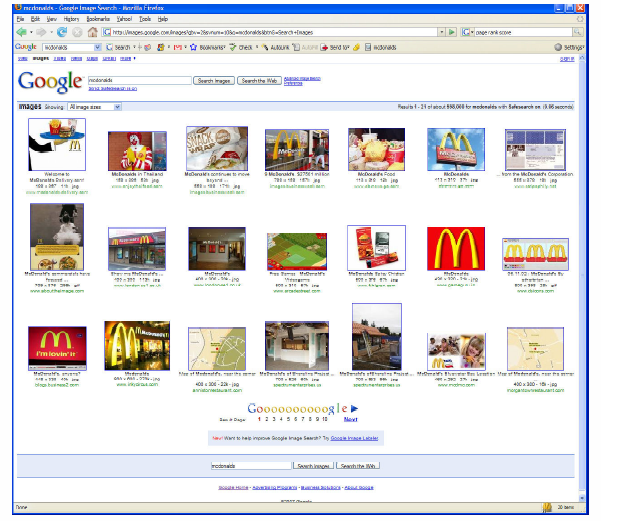Google offers snapshot of VisualRank efforts
It's a tough nut to crack, but the system being worked up by Google researchers aims to sort out images by means of visual cues rather than by associated text.

Google is starting to provide a fuller picture of the work it's undertaking to create a practical tool for image searches.
On its Google Research blog Thursday, the company offered a brief introduction to VisualRank, a system that sorts out images by means of visual cues rather than by text associated with the images. The write-up is a distillation of a much longer paper (PDF), "PageRank for Product Image Search," that two Google researchers presented last week at a conference in Beijing on Web technologies.
The VisualRank system is not yet live, and Google intimated that the image search technology would not become more widely available anytime soon. It did say that "in the coming months" it would offer more details on an "approach that has an easy integration with both text and visual clues."
In its initial VisualRank efforts, Google's research focused on product queries. That's in part because product queries correspond well to the type of "image features" that were central to the study. In addition, the company said, those types of queries are "popular in actual usage" and users have strong expectations about the results they expect, which gave the researchers key examples to address.
Google has also begun to broaden its initiative to take in other query types, including those related to travel.
As it moves forward, the search giant says it's exploring three main directions:
First, estimating similarity measures for all of the images on the Web is computationally expensive; approximations or alternative computations are needed. Second, we hope to evaluate our approach with respect to the large number of recently proposed alternative clustering methods. Third, many variations of PageRank can be used in quite interesting ways for image search. For example, we can use some of these previously published methods to reintroduce, in a meaningful manner, the textual information that the VisualRank algorithm removed.
Over the years, image search has been a significant challenge for Google and others, like start-ups Polar Rose and Riya, with most of the progress being in a fairly limited set of facial recognition characteristics. Last year, for instance, the company said that its Google Image Search could tell the difference between a picture with a face in it and a picture that lacked a face, though it couldn't distinguish between one face and another.
That sort of feature is increasingly common in digital cameras, which in some cases even recognize when a person is smiling or not. Camera makers are also working toward technology that knows who you photographed.
But recognizing a face or other object is a different order of business from delivering meaningful search results based on facial features or on object type.
Hewlett-Packard, meanwhile, has opened a lab at Tsinghua University in Beijing to delve into a wide range of media search types, including still images, video, and music.

